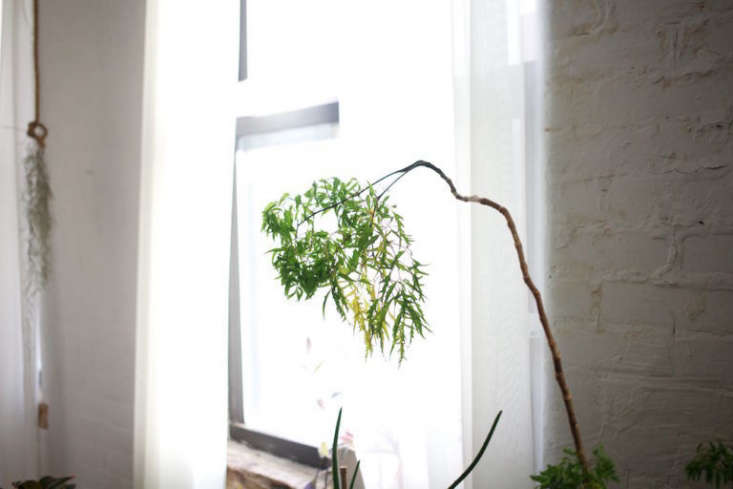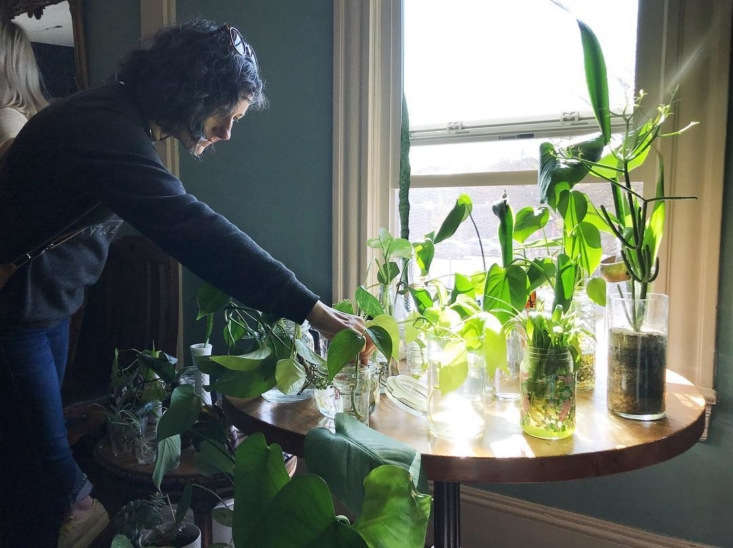Just like us, houseplants want to hunker down for the colder and shorter days ahead. While your foliage friends might not appreciate a warm cup of cocoa or cozy scarfs, they do appreciate a little pampering and a lot of rest during the fall and winter months, when temperatures dip, light conditions dwindle, and moisture diminishes. Most plants will naturally slow down or stop growing at this point to conserve and store energy for growing season come spring. Basically, most houseplants go winter dormant.
If you’re an indoor plant parent, keep reading to learn some helpful tips to keep your potted friends healthy and happy during this time of rest.
1. Alter your watering schedule.

While you might think you should maintain your watering schedule, most houseplants actually prefer less water during this slow period. Always check the level of moisture in your plant’s soil before watering by pushing your finger into the soil about 2 inches, and if it’s dry then you can give it a thorough drink. Be aware that excess water leads to soggy soil which can lead to root rot. Of course each type of plant has different moisture needs, so it pays to do your homework.
2. Dust those leaves.

Plants take in oxygen through their tiny pores, so it’s smart to dust your houseplants on a regular basis to make sure that these breathing leaves remain open and not clogged. Bonus: clean leaves also are better at absorbing light during these dim times. How to do this? Wipe your plant’s leaves with a damp, clean cloth, and while you’re at it, remove any yellowing or dead leaves.
3. Make sure they stay warm.

Okay, I said no warm scarves for your plants, but that doesn’t mean you can’t turn up the heat in the house. Most indoor plants like temps to hover above 50 degrees F. If they get too cold, some houseplants will actually start shedding their leaves. If they’re currently living next to a drafty window, you may want to consider moving them to a toastier spot.
4. Turn up the humidity.

With added dry heat, however, comes a lack of humidity. To thrive, plants like 50-60% humidity. To ensure they stay foliage-fit, consider placing your plants on trays filled with pebbles and water to increase the moisture in the air. Humidifiers also do the job. Another idea is to huddle your plants together to create a symbiotic micro climate, meaning plants close together will transpire by releasing water from their leaves and then share it with neighboring plants.
5. Change the light exposure.

If conditions in your house get too dark, your houseplants may protest by getting leggy, pale, and weak. This is the time to move them to a brighter spot inside. If you can’t provide your plant pal will enough light, consider bringing in some artificial light to keep them cheery.
6. Forgo fertilizing.

Avoid overcompensating for stressful winter conditions by feeding your plants. Not only is this wasteful, but it’s counterproductive because most indoor plants are not growing and should be conserving energy during this time. Feeding them now may confuse their growing cycle and do harm.
7. Peruse for pests.

It happens. You turn your back on your houseplant and suddenly scale and white fly have moved in. Not only are bug intruders unsightly, but they can damage your plant. The best thing you can do to avoid this scenario is to regularly check your plants for pests, and if you find some, search out the most earth-friendly remedy. This is another reason to keep your plant’s leaves dust free as critters as less likely to hang out on clean leaves.
For more on houseplant care, see:
- Houseplants: How to Decode the Info on Plant ID Tags
- The 10 Hardest Houseplants to Keep Alive, According to Gardenista Readers
- 10 Things Nobody Tells You About Houseplants









Have a Question or Comment About This Post?
Join the conversation